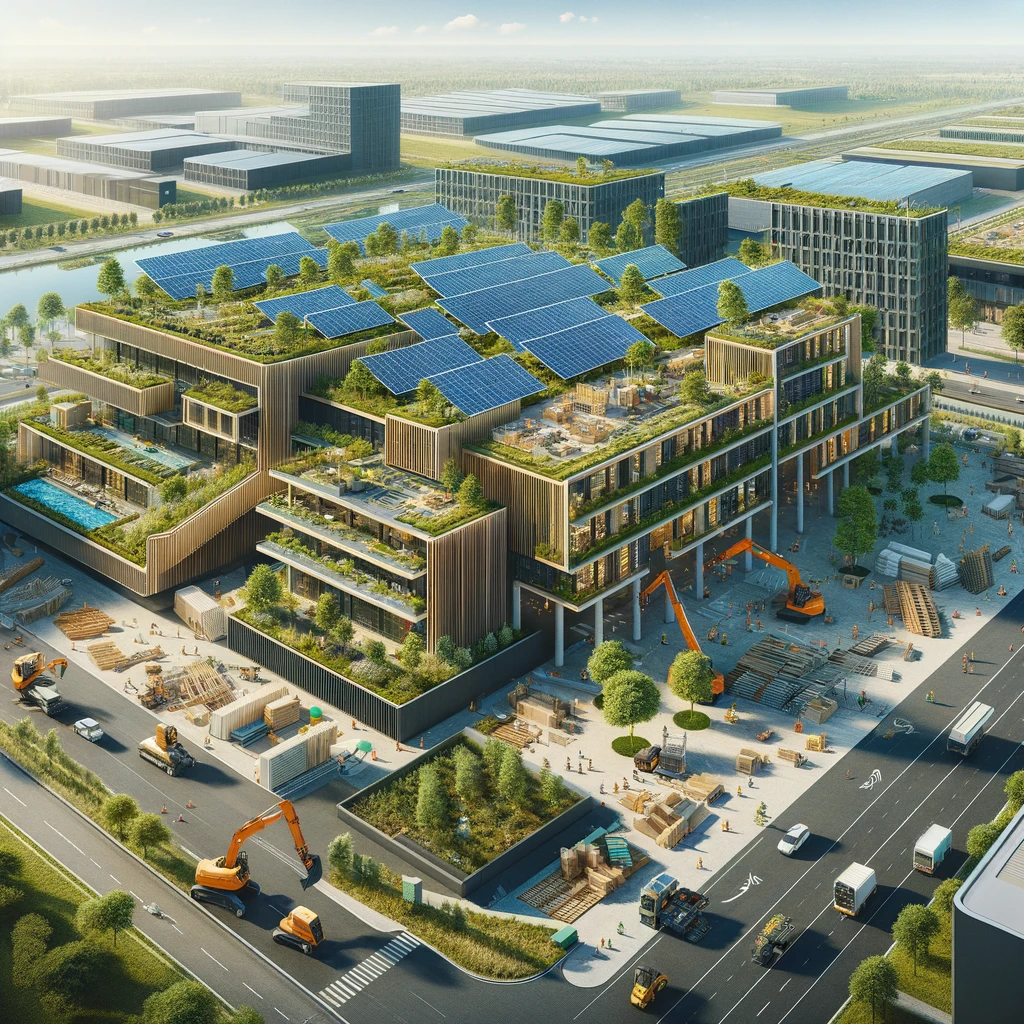In the vast landscape of global sustainability efforts, the construction industry looms large due to its significant impact on the planet. However, achieving sustainability in construction often feels like an uphill battle. So, why does this goal of sustainable construction seem so difficult to attain?
The Heart of the Issue
Many companies are deeply invested in outdated practices that harm the environment, making the shift to sustainable construction seem daunting. Overcoming this challenge requires confronting both financial investments in the status quo and the psychological barrier known as the sunk cost fallacy.
According to a sustainability manager at a leading telecoms company, infrastructure projects take a heavy toll on the environment, highlighting the tension between sustainability goals and real-world constraints.
A Blueprint for Change: Innovate, Rethink, Transform
To foster systemic and structural change, consider these approaches at different levels and see what is already out there that you can work with now:
- At the Systemic Level: Inspired by the donut economy, shift your focus from financial growth to nurturing the planet and societies. Building Information Modeling (BIM) Collaboration exemplifies this shift by enhancing transparency and efficiency across the construction value chain, fostering shared responsibility and reducing waste. Companies like Royal Haskoning already facilitate digital twins in construction and imagine how that contributes to a new way of collaboration.
- At the Business Model Level: Rethink business models to mitigate waste and pollution. The concept of Material Banks and Circular Economy Initiatives, such as the use of “material passports” for buildings, demonstrates how steward ownership of materials can lead to innovative, sustainable practices that benefit all stakeholders.
- Deciding Where to Play: Most importantly, Start with small-scale and impactful projects. 3D Printed Houses offer a glimpse into how rapid prototyping and experimentation can address scalability challenges, showcasing a path toward affordable and sustainable housing. Imagine combining the former two levels into a project you can do now!
Jan Rotmans’ insight suggests that even a 25% participation rate can trigger significant change, emphasizing the importance of starting with localized experiments.
Jan Rotmans’ insight in Embracing Chaos suggests that research has proven that you need a mere 25% participation to reach a tipping point for change. Small, localized experiments will create local momentum towards that 25% tipping point locally. This local tipping point will build up to a broader tipping point of transformation and so on. So starting small will create a ripple effect, as long as you make sure you know where to play and choose wisely where to start. Dive into the Where to play, how to win framework to help you make these decisions.
Drawing Inspiration from the Journey
Despite challenges, the construction industry is gradually embracing sustainability, showcasing areas ripe for innovation and systemic change.
Environmental Imperative
With the construction sector contributing an estimated 39% of global carbon emissions, urgent action is needed to adopt sustainable practices.
Progress Amidst Challenges
Despite obstacles, the industry is making strides in sustainable design and technology, enhancing transparency and collaboration.
The Power of Incremental Change
Small-scale projects illustrate the potential for sustainable innovation, setting the stage for broader transformations.
Embracing the Future
The time for action is now. By collectively prioritizing sustainability and embracing innovation, we can shape a greener future.
As we venture into uncharted territories, learning from every attempt, we pave the way for transformative successes.
Conclusion: Mobilizing for Change
The transition to greener practices in the construction industry presents both challenges and opportunities. By leveraging innovation and prioritizing sustainability, we can forge a path towards a more sustainable future.
This exploration serves as a call to action for all stakeholders to collaborate and innovate towards sustainable construction. It’s time to make your transition, set bold ambitions and transform.
Together, we can turn the chaos of today’s transitions into tomorrow’s triumphs. Let’s Aim for the Moon and transform the future, one bold step at a time.
